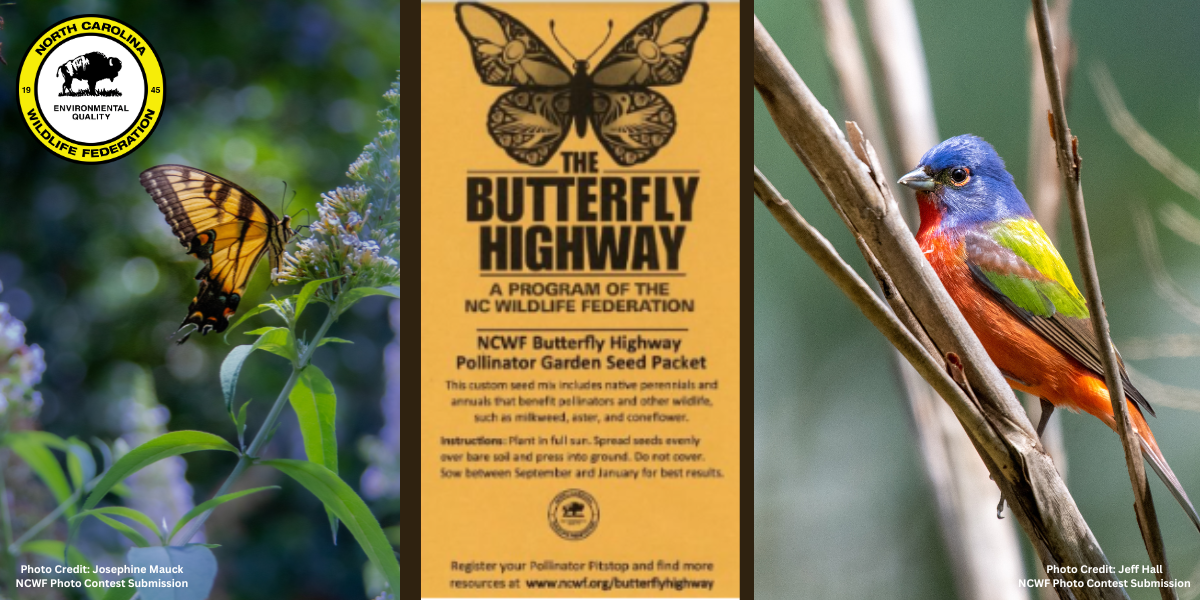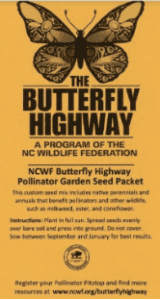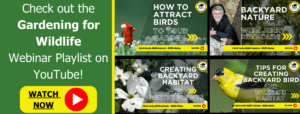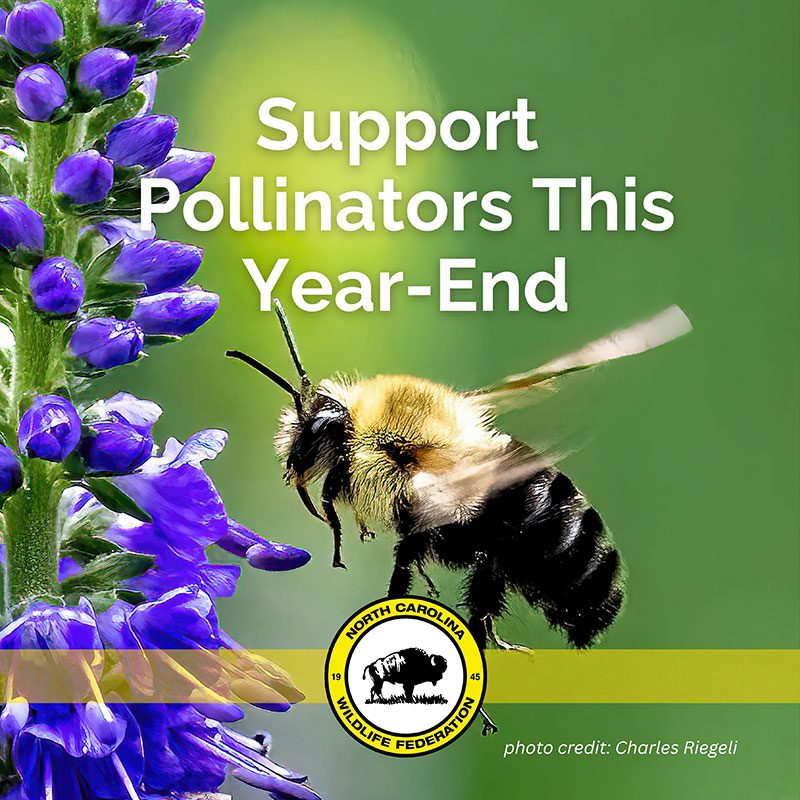Wildflower Wonder: Plant Butterfly Highway Seeds for Pollinators and Wild Birds

Purchase your Butterfly Highway wildflower seeds now!

Spring Is Seeds Season!
There is no better way to show your support for North Carolina pollinators, birds, and other wildlife species than to ensure that your yard, garden bed, or window planter is ready for the wildlife species that depend on it most.
One easy way to make your yard a safer, more productive place for wildlife is through planting a packet of Butterfly Highway native seeds. Not only do these seeds produce plants that provide critical habitat and nectar sources for pollinators in the warm season, they also support wild birds, including American goldfinches, Carolina wrens, tufted titmice, indigo buntings, and so many more.
However, it is critical that you get them in the ground right away. Native wildflower seeds require a period of time underground during freezing winter periods to break their dormancy cycle and ensure they sprout effectively in the spring. The ideal planting time for Butterfly Highway seeds spans from September to early February – meaning you should get them in the ground this week, if possible!
Seed Basics
To plant your Butterfly Highway seeds, find a place that receives full sun and spread them evenly over bare soil. Gently press them into the ground, but do not cover them with any additional soil. Each packet of Butterfly Highway seeds covers 25 square feet of habitat!
These seeds are sure to provide a quality food source for wildlife in your neck of the woods, while adding a gorgeous splash of color to your landscape design. Each packet contains a mix of the following species:
Partridge pea (Chamaecrista fasciculata)
Black Eyed Susan (Rudbeckia hirta)
Purple Coneflower (Echinacea purpurea)
Butterfly Weed (Asclepias tuberosa)
Common Milkweed (Asclepias syriaca)
Blazing Star (Liatris spictata)
Beebalm (Monarda fistulosa)
Heath Aster (Symphyotrichum ericoides)
You’ve Planted Your Butterfly Highway Seeds… Now What?
If you want to go the extra step in making your yard a wildlife-friendly place, you can get it registered as a Butterfly Highway Pitstop or a Certified Wildlife Habitat. And be sure to check out NCWF’s Butterfly Highway Page for all sorts of helpful information as you embark on your journey to create habitat!
Transforming your property into a more wildlife-friendly – and subsequently wild bird and pollinator-friendly – environment doesn’t have to be an overwhelming task. At the core of habitat improvement is providing wildlife with the essential elements they need to thrive. These essentials can generally be categorized into four main areas:
Food: Native plants provide wildlife with nectar, seeds and berries. Feeders can supplement.
Water: All animals need water to survive and some need water for bathing or breeding.
Cover: Wildlife needs shelter to escape bad weather and predators.
Places to Raise Young: Wildlife needs special habitats for bearing and raising young.
For some practical ways you can implement these essential services, check out Wild Bird Essentials: How to Provide Birds with Shelter, Food, and Water.
For more information on how to garden for wildlife:

Written by:

– Bates Whitaker, NCWF Communications & Marketing Manager

– Luke Bennett, NCWF Conservation Coordinator


